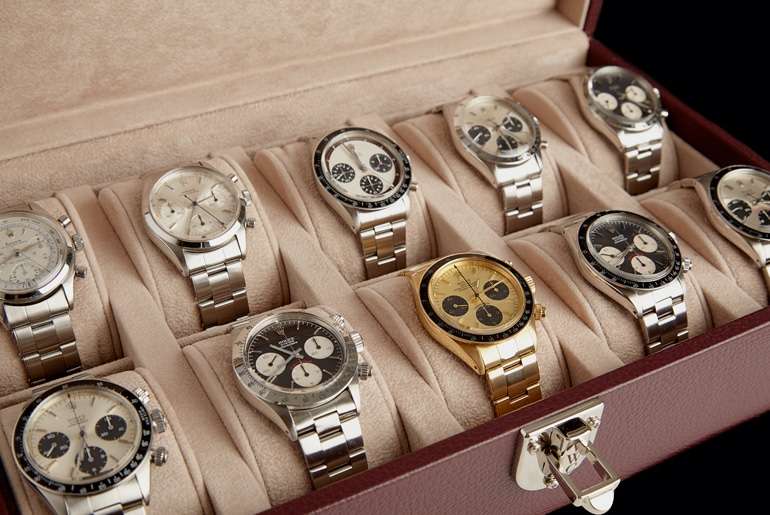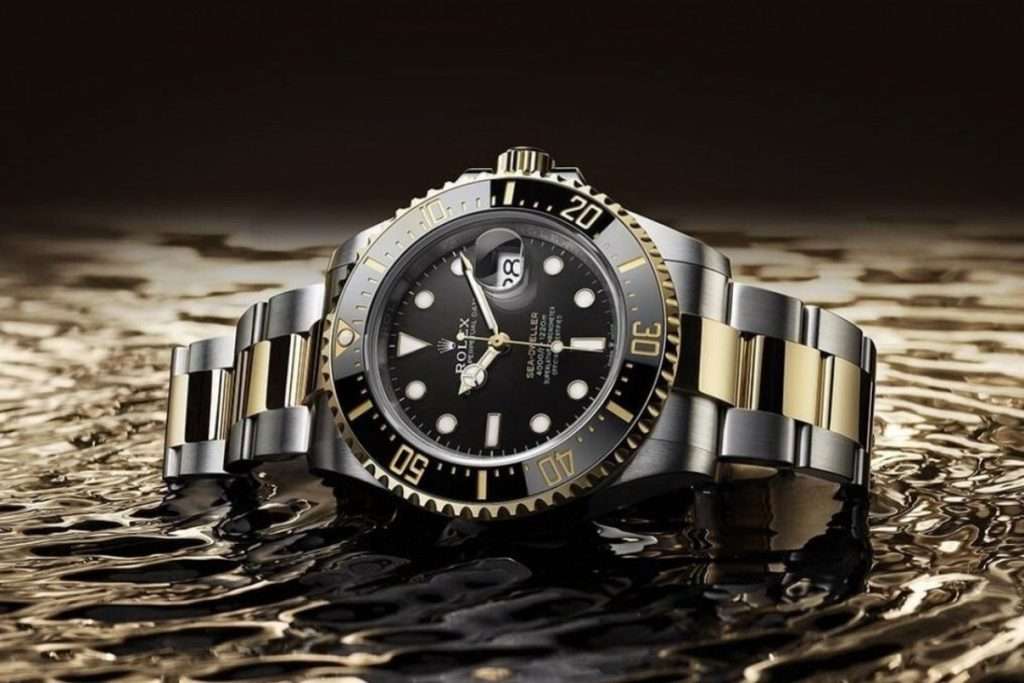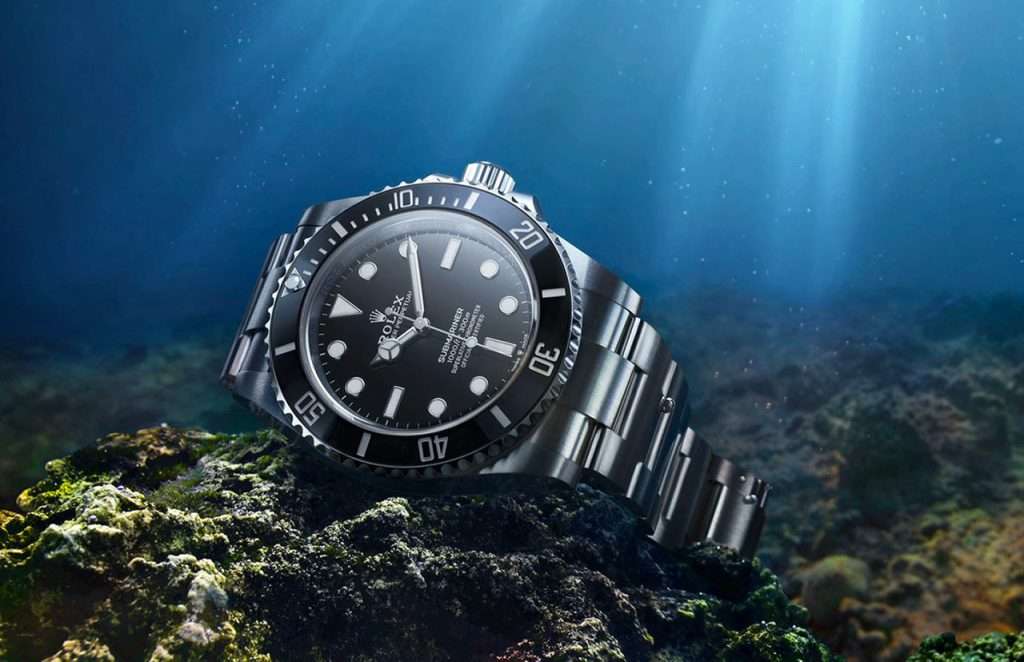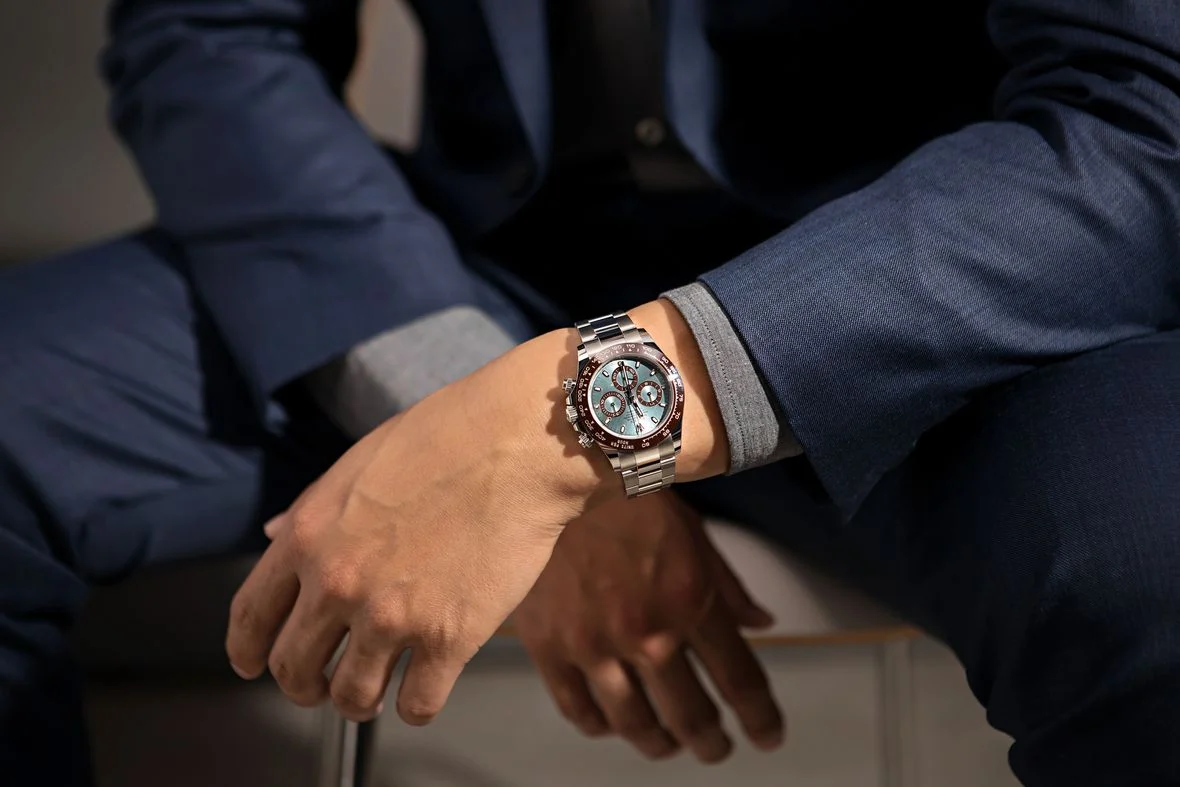The pre-owned luxury market is booming right now—from secondhand fashion to furniture. But topping the list of the resale market is the epitome of luxury and the most sustainable: Rolex watches.
NBA All-Star, and now owner of NBA team the Charlotte Hornets, Michael Jordan, may be known for his hands, but if his latest investment means anything, these days, the basketball legend is all about the wrists—specifically, ones wearing luxury watches.
Jordan joins Milwaukee Bucks star Giannis Antetokounmpo, Bucks owner Marc Lasry, Phoenix Suns stars Chris Paul and Devin Booker, and Wall Street investor Bill Ackman, in a $165 million funding round for secondhand luxury watch platform, WatchBox.
WatchBox, which launched in 2017, is now worth an estimated $1 billion, and could be moving toward an IPO. Unlike the booming peer-to-peer secondhand market, WatchBox buys merchandise outright, authenticates its, and resells to collectors and other buyers in a fee-based sales model.
“WatchBox’s sales are up 40% year over year and we are on target to achieve $300 million in sales this year,” co-founder and CEO Justin Reis told Reuters.
“Rolex, Patek Philippe, Audemars Piguet, and A. Lange & Sohne continue to perform incredibly well alongside leading independent brands,” Reis said.
Secondhand second hands
The secondhand luxury watch market is estimated at more than $20 billion, according to recent data, including a study published last month. It found that more than 30 percent of consumers were likely to purchase a secondhand watch within the next year. The market could tip $32 billion by 2025—more than a 30 percent increase from today’s value.
Like millennials and Gen-Z are driving the demand for sustainable and secondhand clothing, furniture, and diamonds, they’re also behind the shift to pre-owned watches.
eBay is also turning its focus to pre-owned watches. Its 2021 “Hard to Find” holiday pop-up shops opening across the country will emphasize the luxury watch category.
According to eBay, luxury watches are experiencing double digit growth on the site, with Rolex topping the list as the most popular watch brand in 2021, followed by Omega and Gucci in terms of volume of items sold. The online resale platform says the average luxury watch buyer who spends more than $2,000 on a watch spent on average more than $9,000 on watches in total, and $8,000 on more than 50 items across other categories.

New data from the Second Hand Fashion Index published by the UK-based secondhand platform, For-sale, shows Rolex is the most searched for pre-owned luxury brand.
The platform looked at Google search data with the word “used” followed by the brand names. The group said the secondhand market is seeing unprecedented demand as evidenced by the boom in resale platforms like Vestiaire Collective, ThredUp, and The RealReal in fashion, as well as demands for secondhand furniture.
According to Morgan Stanley, Rolex sold more than 800,000 watches last year due in large part to the secondhand demand. By comparison, other luxury watch brands like Patek Philippe, sold 53,000, Audmars sold 40,000, and Richard Mille, just 4,300.
The secondhand market boom allows luxury watch brands to protect collections and hold their value.
Rolex: luxury and sustainability
While Rolex has long been the symbol of luxury, its most recent efforts also make it the bar for sustainability efforts.
“I believe that the Swiss mechanical watch is a born out of a ‘sustainable’ culture in which an innate appreciation of quality is expressed not solely in the transgenerational longevity of the product, but also in the far-sighted vision of such men as Hans Wilsdorf, the founder of Rolex and Tudor,” historian and author Nicholas Foulkes writes for Spears.
“Even if he did not use the word, Wilsdorf was clearly a man of a sustainable mindset opposed to built-in obsolescence—that much is suggested by the name of his most famous product, the Oyster Perpetual. Then in 1945, at the age of 64, he wanted to make his entire business perpetual and created a foundation to which he turned over his shares, the dividends to be distributed by the foundation’s board according to specific instruction.”

Rolex details its comprehensive sustainability commitments at its Rolex.org website. “Our home is dependent on the individuals and organizations committed to finding solutions to protect it. We, at Rolex, support those who go above and beyond to safeguard and preserve our Perpetual Planet for the next generations,” the homepage reads.
According to Foulkes, Rolex’s two new models of its most famous watches, the Rolex Explorer I and II are “obliquely referencing the brand’s environmental credentials.”
The brand recounts Wilsdorf’s love for exploration a century ago—using it as his own personal testing ground for the company’s timepieces.
“But the world has changed,” the company notes. “As the 21st century unfolds, exploration for pure discovery has given way to exploration as a means to preserve the natural world. Rolex continues the legacy of its founder, supporting the explorers of today on their new mission: to make the planet perpetual.”
Perpetual Planet
That led way to the Perpetual Planet campaign, which launched in 2019—it highlighted the brand’s three existing conservation efforts and its relationship with the National Geographic Society to study the impacts of climate change.
That same year, Rolex sponsored a National Geographic expedition to Mt. Everest in partnership with Tribhuvan University to study the climate’s impact on the glaciers of the Hindu Kush-Himalaya, which provide fresh water for one billion people. The region is one of the hardest hit by the climate crisis.
The brand also partnered with marine biologist and activist Sylvia Earle. She’s been a brand ambassador since 1982.
In partnership with Rolex, Earle has established more than 100 Hope Spots—a concept Earle first introduced during a 2009 TED Talk. These spots are part of a broader network of Marine Protected Areas aimed at preserving and restoring oceans. The ultimate goal, according to Earle, is to protect 30 percent of the world’s oceans by 2030. Only about eight percent of the oceans are protected at present.

Rolex played an integral part in Earle’s Hope Spots project, more than doubling the number of locations from 50 to 112 in just five years.
Commemorating the 50th anniversary of the Oyster, Rolex launched the Rolex Awards for Enterprise in 1976. It awards “exceptional individuals who have the courage and conviction to take on major challenges; men and women who have a spirit of enterprise, initiating extraordinary projects that make the world a better place.”
The company says the awards were designed to “fill a void” in corporate philanthropy by supporting exceptional individuals around the world, “pioneers who had no or little access to traditional funding and were responding to major challenges with original and innovative projects that advance human knowledge and well-being.”
In the nearly fifty years since the awards launched, more than 35,000 individuals have applied and 150 Laureates from around the world have received substantial cash grants.
“Our watches are built to last. So is our contribution to future generations,” reads the Rolex website.
“Rolex has succeeded making its watches perpetual,” Foulkes confirms, “so why not the planet as well?”


